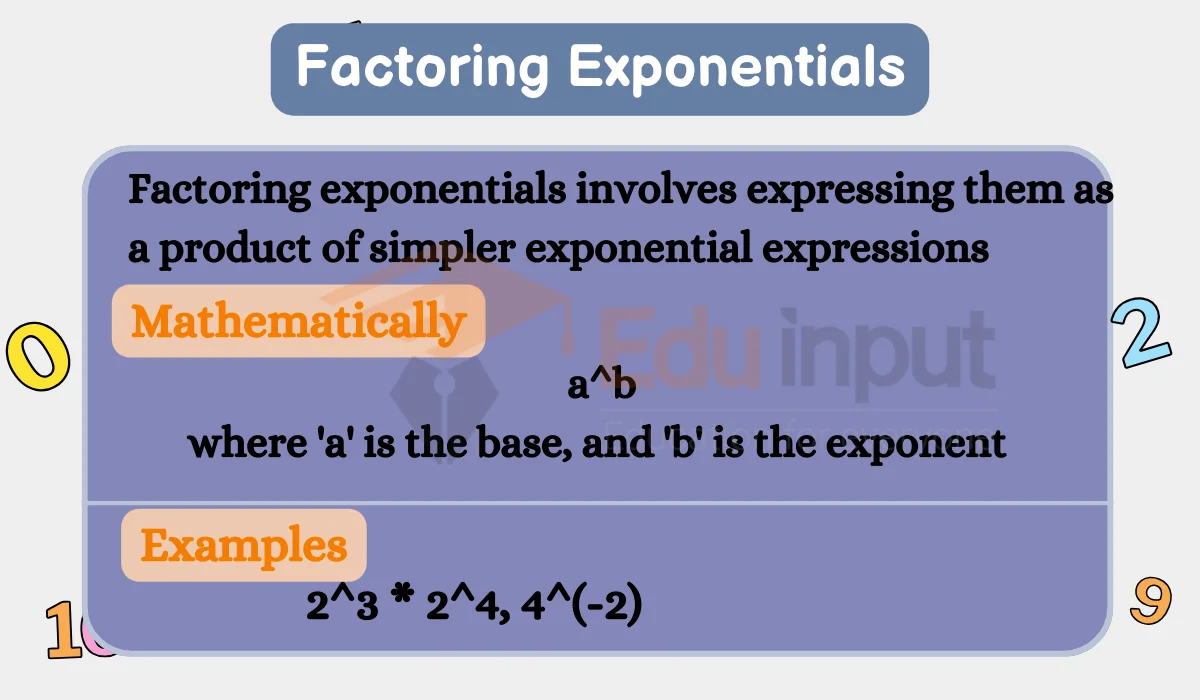Factoring Quadratics: Difference of Squares
Factoring quadratic expressions often be simplified by using the difference of squares formula. This technique is useful when the quadratic expression written as the difference of two perfect squares.
How to Apply the Difference of Squares Formula
Difference of squares formula states that the difference between two squares is equal to the product of the sum and difference of their roots.
If a2 – b2, then a2 – b2 = (a + b)(a – b)
To factor a quadratic expression using the difference of squares formula:
- Identify if the quadratic expression written in the form of a2 – b2.
- Take the square roots of the first and second terms to determine the values of a and b.
- Apply the formula: a2 – b2 = (a + b)(a – b)
- Simplify the factored expression.
Solved Examples
Example 1
Factor x2 – 4
x2 – 4 can be written in the form a2 – b2, with a = x and b = 2
Applying the formula:
x2– 4 = (x + 2)(x – 2)
The factored expression is (x + 2)(x – 2).
Example 2
Factor 9x2 – 4
9x2 – 4 can be written as (3x)2 – 22, with a = 3x and b = 2
Applying the formula:
9x2 – 4 = (3x + 2)(3x – 2)
The factored expression is (3x + 2)(3x – 2).
Solving Quadratic Equations Using Factored Form
Once a quadratic expression has been factored using the difference of squares formula, the factored form can be used to solve quadratic equations.
To solve:
- Set the factored expression equal to 0.
- Solve each factor individually by setting it equal to 0 and solving.
- The solutions will be the values obtained from step 2.
Example
Solve x2– 4 = 0
Factoring using difference of squares gives: (x + 2)(x – 2) = 0
Setting each factor equal to 0:
x + 2 = 0, x = -2
x – 2 = 0, x = 2
The solutions are x = -2 and x = 2.
FAQs
What is the difference of squares formula?
The difference of squares formula states that the difference between two perfect squares (a2 – b2) can be factored as the product (a + b)(a – b).
When can you use the difference of squares formula?
You can use it when the quadratic expression can be written in the form of a2 – b2 for some values of a and b.
Why does the difference of squares formula work?
It works because the product of (a + b)(a – b) will expand to a2 – b2, allowing you to simplify the original quadratic expression.
What are some examples of factoring using difference of squares?
x2 – 4 = (x + 2)(x – 2)
9x2– 1 = (3x + 1)(3x – 1)
4x2 – 9 = (2x + 3)(2x – 3)






Leave a Reply